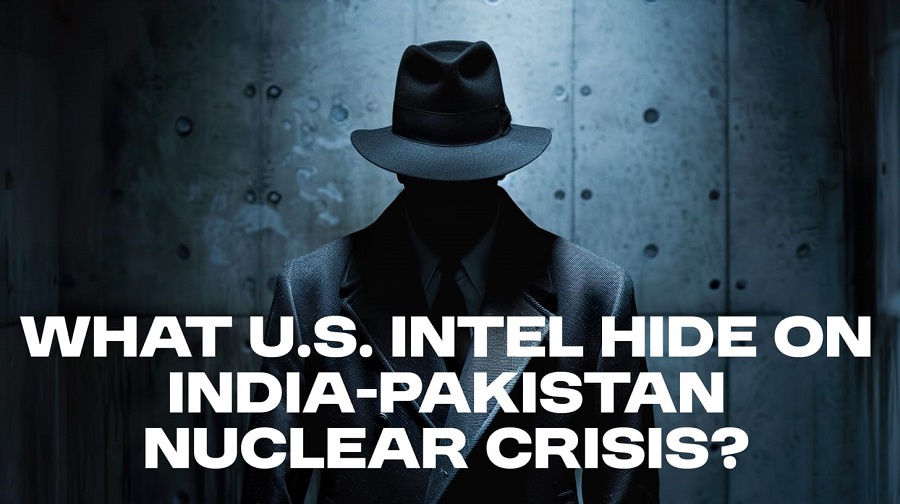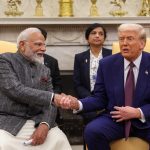
Fired for Lying? What Collins and Maria Didn’t Tell the President About Pakistan
This wasn’t just a bureaucratic shuffle. It was a purge. When Tulsi Gabbard, now Director of National Intelligence, sacked Mike Collins and Maria Langan-Riekhof from the helm of the National Intelligence Council (NIC), the headlines were quick to sell the official version: “bias,” “politicization,” “anti-Trump sentiment.” But dig a little deeper into the timeline, the region in question, and the strategic intelligence failures mounting over South Asia in early 2025, and the firings begin to look less like ideological retaliation and more like a quiet reckoning. A reckoning over what wasn’t said, what wasn’t flagged, and who might have kept the President in the dark as the world tiptoed on the edge of nuclear escalation.
Mike Collins, the Acting Chair of the NIC, was no newcomer. A 28-year veteran of the intelligence community and an expert on East Asia, Collins was widely seen as a stabilizing technocrat. Maria Langan-Riekhof, his deputy, held sway over strategic futures assessments and had authored forward-looking threat pieces for over a decade. Her 2017 Brookings paper predicted, with eerie precision, a covert intelligence proxy war between India and Pakistan spilling into Afghanistan, complete with terrorism blowback and nuclear brinkmanship. These weren’t paper pushers. They were gatekeepers of America’s most sensitive assessments. Both were Biden-era appointees. And both were in charge when the NIC should have been shouting warnings from the rooftops.
That is, if they were saying anything at all.
The NIC doesn’t conduct operations, but it does prepare and approve the intelligence briefings that go straight to the top: the President’s Daily Brief (PDB). They don’t fire missiles, but they decide which threats get ranked and which don’t. The NIC’s silence can be more dangerous than its voice. And in the first five months of 2025, its silence on South Asia was deafening.
Let’s walk through the timeline.
In January, tensions were already simmering after Pakistan-backed terrorists launched an attack near Pahalgam in Indian-administered Kashmir. India signaled strong retaliation. Washington, however, maintained distance. JD Vance, Nikki Haley, and several others in Congress emphasized that America must not intervene in yet another South Asian crisis. All seemed routine.
Then came May 10th.
India, in what many believe to be a targeted hypersonic strike, allegedly hit Kirana Hills — an underground facility long suspected to house elements of Pakistan’s nuclear arsenal. Within hours, seismic activity consistent with a kiloton-level underground event was detected. But Washington stayed mum. Only after Islamabad began frantically briefing U.S. officials and leaked hints of radiological risks did the fog begin to lift.
Suddenly, America changed its tone. A backchannel ceasefire was brokered between Delhi and Islamabad. Intelligence chatter suggested that U.S. military and nuclear specialists were flown into Pakistan to assess potential radiation leakage. When asked, U.S. Strategic Communications Director Tommy Piggott refused to deny that teams were dispatched — diplomatic speak for confirmation. The abrupt pivot in posture, the sudden urgency, the scramble — it all screamed one thing: the U.S. had been caught flat-footed.
And someone had to take the fall.
Tulsi Gabbard fired Collins and Langan-Riekhof within days. The official story pinned the blame on an NIC report that contradicted Trump’s narrative on Venezuelan gangs. But that was old news. The Venezuela memo was just the smoke. The fire was in South Asia.
Because the truth was this: the NIC had failed. It had failed to alert the administration to multiple red flags:
The onboarding of Business Systems International (BSI), run by convicted Pakistani-American Syed Obaidullah, into Maxar’s satellite imaging partner network.
The unusual spike in high-resolution image requests of Pahalgam in February 2025, just weeks before India launched Operation Sindoor.
The possible misuse of U.S.-origin satellite data by Pakistan’s ISI to track Indian deployments.
These weren’t just technical oversights. This was strategic blindness.
BSI, under Obaidullah, had previously been convicted of illegally exporting U.S. defense tech to Pakistan. Yet by early 2025, it was inexplicably a listed partner of Maxar — America’s premier satellite firm. Maxar claimed BSI placed no orders of Pahalgam, yet the volume of imagery ordered by someone doubled in February. Either someone was lying, or someone failed to track.
And the NIC, under Collins and Maria, said nothing.
Even more damning? Maria herself had written in 2017 that India and Pakistan could descend into covert operations and retaliatory strikes, especially if external powers withdrew or remained passive. She explicitly warned of terrorist attacks followed by miscalculated military responses, with Kashmir as the likely trigger. What happened in 2025 mirrored her own prophecy.
So why didn’t she raise the alarm?
Was it bureaucratic inertia? Was it bias from the Biden years? Or was it just garden-variety institutional arrogance? Whatever the cause, the cost was clear. The President of the United States — and by extension, the world — may have been kept blind to the most dangerous nuclear confrontation of the decade.
And that is why they were fired.
Not because of some memo on Venezuelan gangs. Not because of old letters about Hunter Biden’s laptop. But because the NIC under Collins and Maria may have tried to downplay, delay, or suppress critical intelligence that could have averted a near-catastrophic war.
Because the U.S. has a long, dark history of intelligence omissions that triggered global crises:
The CIA underestimating the Iranian Revolution.
Ignoring Rwanda in 1994.
Falsely building the case for Iraq’s WMDs.
Watching the Arab Spring spiral into civil wars.
Now add Kirana Hills to that list.
Tulsi Gabbard may have played the optics game with her explanation. But she knows, as does anyone who has seen the classified reports, that these firings were not political revenge.
They were the closest thing Washington has to an admission of guilt.
Because when the silence of your intelligence agency nearly sparks a nuclear war, someone has to go.


















